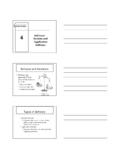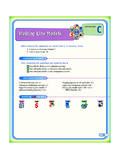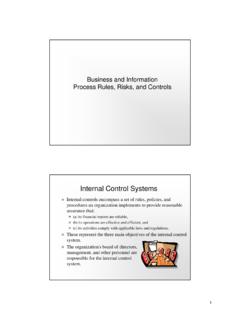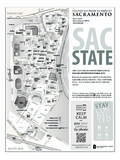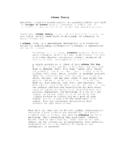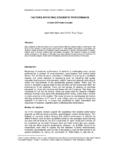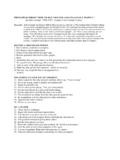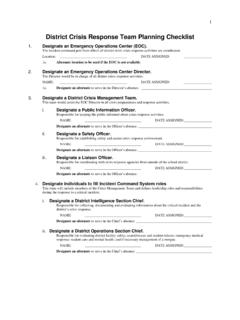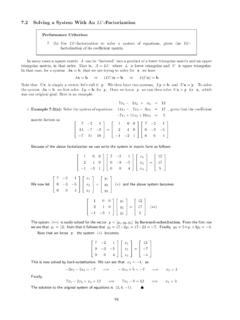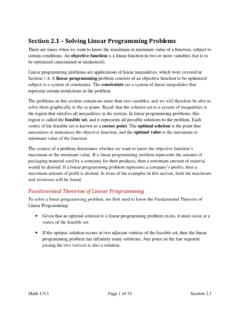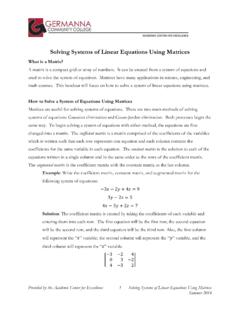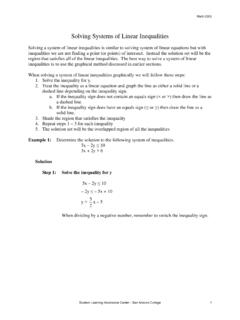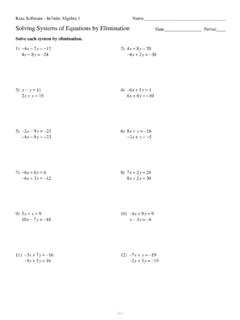Transcription of The PIECES Problem-Solving Framework and Checklist
1 The PIECES Problem-Solving Framework and Checklist The following Checklist for problem, opportunity, and directive identification uses Wetherbe's PIECES Framework . Note that the categories of PIECES . Framework is equally suited to analyzing both manual and computerized systems and applications. CONTROL (and Security) Problems, Opportunities, and Directives PERFORMANCE Problems, Opportunities, and Directives A. Too little security or control A. Throughput-- the amount of work performed over some period of time. 1. Input data is not adequately edited B. Response time-- the average delay between a transaction or request and a 2. Crimes are (or can be) committed against data response to that transaction or request and a response to that transaction or a. Fraud request. b. Embezzlement 3. Ethics are breached on data or information -- refers to data or INFORMATION (and Data) Problems, Opportunities, and Directives information getting to unauthorized people 4.
2 Redundantly stored data is inconsistent in different files or A. Outputs databases 1. Lack of any information 5. Data privacy regulations or guidelines are being (or can be). 2. Lack of necessary information violated 3. Lack of relevant information 6. Processing errors are occurring (either by people, machines, or 4. Too much information -- information overload software). 5. Information that is not in a useful format 7. Decision - making errors are occurring 6. Information that is not accurate B. Too much control or security 7. Information that is difficult to produce 1. Bureaucratic red tape slows the system 8. Information is not timely to its subsequent use 2. Controls inconvenience customers or employees B. Inputs 3. Excessive controls cause processing delays 1. Data is not captured 2.
3 Data is not captured in time to be useful 3. Data is not accurately captured -- contains errors EFFICIENCY Problems, Opportunities, and Directives 4. Data is difficult to capture 5. Data is captured redundantly -- same data captured more than once A. People, machines, or computers waste time 6. Too much data is captured 1. Data is redundantly input or copied 7. Illegal data is captured 2. Data is redundantly processed C. Stored data 3. Information is redundantly generated 1. Data is stored redundantly in multiple files and/or databases B. People, machines, or computers waste materials and supplies 2. Stored data is not accurate (may be related to #1) C. Effort required for tasks is excessive 3. Data is not secure to accident or vandalism D. Materials required for tasks is excessive 4. Data is not well organized 5.
4 Data is not flexible -- not easy to meet new information needs SERVICE Problems, Opportunities, and Directives from stored data 6. Data is not accessible A. The system produces inaccurate results B. The system produces inconsistent results ECONOMICS Problems, Opportunities, and Directives C. The system produces unreliable results D. The system is not easy to learn A. Costs are unknown E. The system is not easy to use B. Costs are untraceable to source F. The system is awkward to use C. Costs are too high G. The system is inflexible to new or exceptional situations H. The system is inflexible to change I. The system is incompatible with other systems J. The system is not coordinated with other systems
